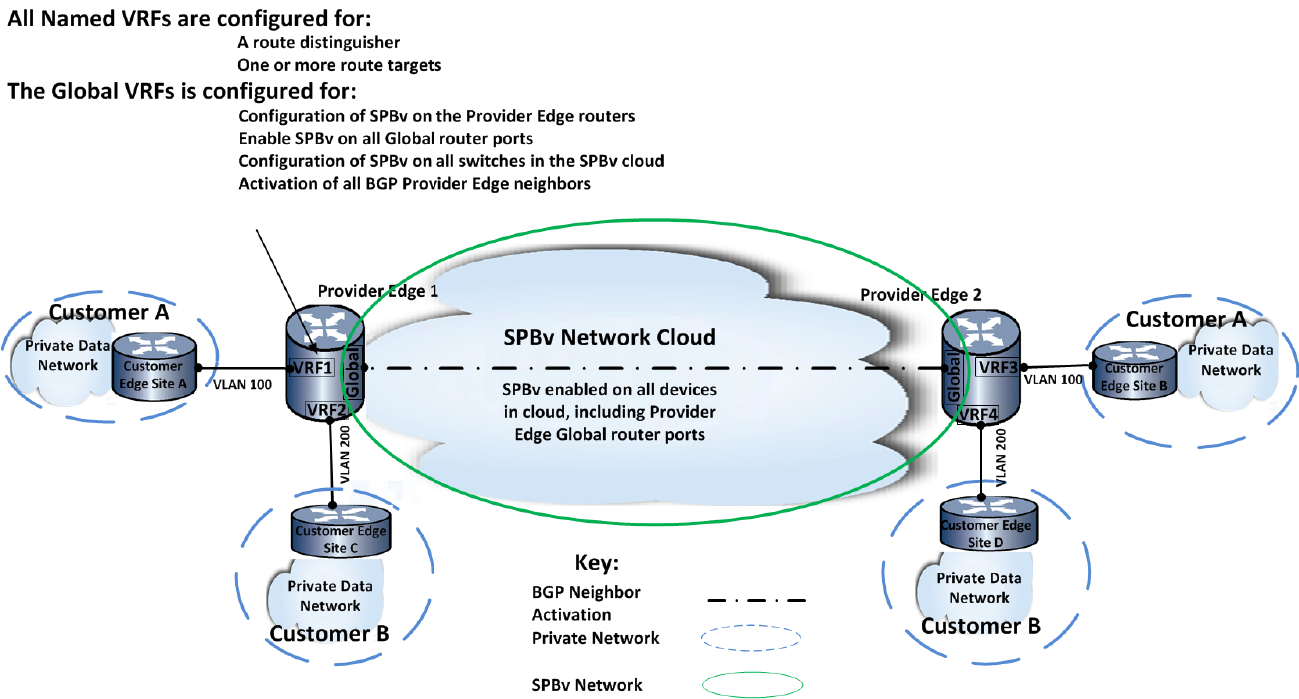Using SPBV, the PE router is directly connected to its BGP peers, so an IGP (OSPF) is not needed. The required fully integrated services on the PE router for an SPBV network to establish are:
There are two router types in a typical L3 VPN over SPBV network:
Imported L3 VPN routes learned on the PE router VRFs are redistributed to the customer edge routers using BGP.
Layer 3 VPN over SPBv Overview provides an overview of a L3 VPN over SPBV network. There are two L3 VPNs: Customer A on base-VLAN 100 and Customer B on base-VLAN 200.
Each PE router is configured for two VRFs, one for each L3 VPN. The L3 VPN for Customer A uses VRFs VRF1 and VRF3. The L3 VPN for Customer B uses VRF2 and VRF4. For a L3 VPN to operate, each VRF must be configured with an RD. Each VRF must be configured with at least one route target that imports or exports L3 VPN routes, or both imports and exports L3 VPN routes. Each PE must be configured for SPBV with SPBV enabled on all Global router ports. All devices within the SPBV cloud must be configured for SPBV. On each PE router, BGP must be configured at the global VRF to redistribute routes from each VRF to the linked CE router. The appropriate IPv4 or IPv6 BGP L3 VPN address family must be enabled. Within the appropriate BGP L3 VPN address family, activate each BGP neighbor.


 Print
this page
Print
this page Email this topic
Email this topic Feedback
Feedback